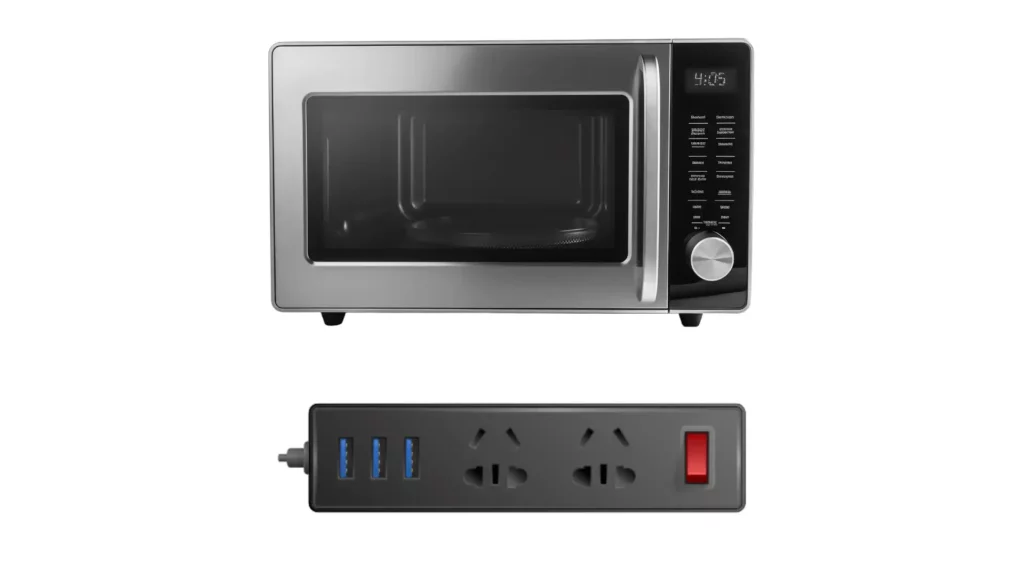In today’s fast-paced world, convenience in the kitchen is more crucial than ever. With microwaves being a staple of modern cooking, ensuring their safe and efficient use is essential.
A question that frequently arises is, Can a microwave be plugged into a power strip? This guide delves into the nuances of this query, providing insights and safety tips to enhance your kitchen's functionality and safety.
Understanding Microwave Usage and Safety
Microwave ovens have fundamentally transformed culinary practices by streamlining the cooking and reheating processes, thereby becoming a vital component in kitchens across the globe.
These appliances not only offer unparalleled convenience but also challenge users to maintain a high standard of operational safety. Among the myriad of inquiries raised by microwave users, the issue of whether it is safe and appropriate to connect a microwave oven to a power strip stands out as a significant concern.
This guide focuses on safe microwave oven use, highlighting electrical connectivity and safety features. It includes technical specs, and manufacturer recommendations, and aims to enhance users' kitchen experience.
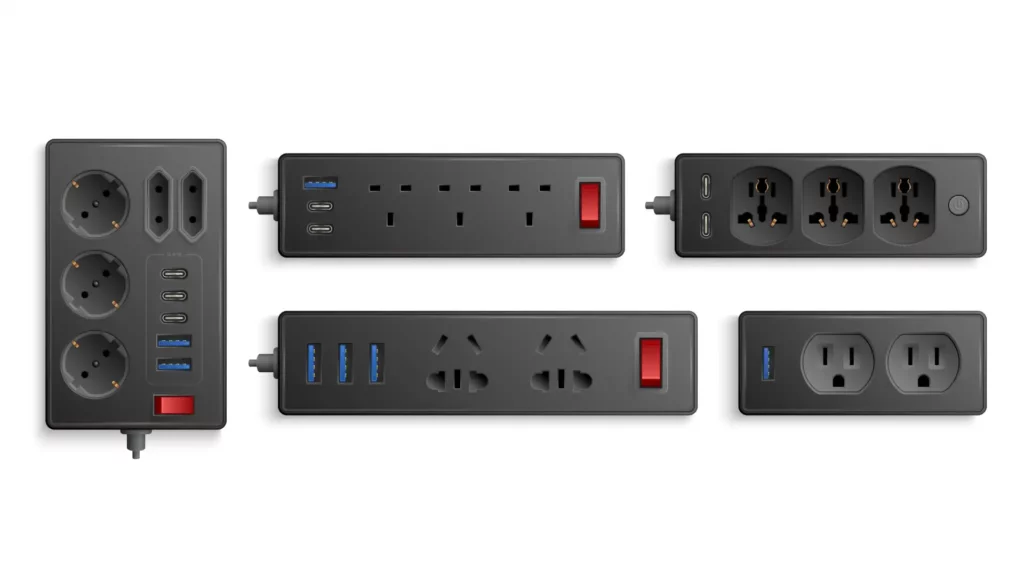
What is Power Strips
Before delving into the specifics of microwaves and power strips, let's first understand what a power strip is.
An advanced power strip is an electrical device that allows multiple electrical devices to be powered from a single electrical socket. They often come with built-in surge protectors, offering some level of protection against voltage spikes.
The Fundamentals of Microwave Power Requirements
Microwave ovens require a significant amount of power, typically between 600 to 1200 watts, depending on their size, features, and technology. This high power consumption necessitates the use of properly rated electrical outlets to prevent overload risks.
When selecting a microwave, it's important to consider the balance between power consumption, efficiency, and cooking needs, as well as the appliance's impact on electricity bills and environmental footprint.
Advanced models are energy-efficient, cost-effective, and eco-friendly for cooking.
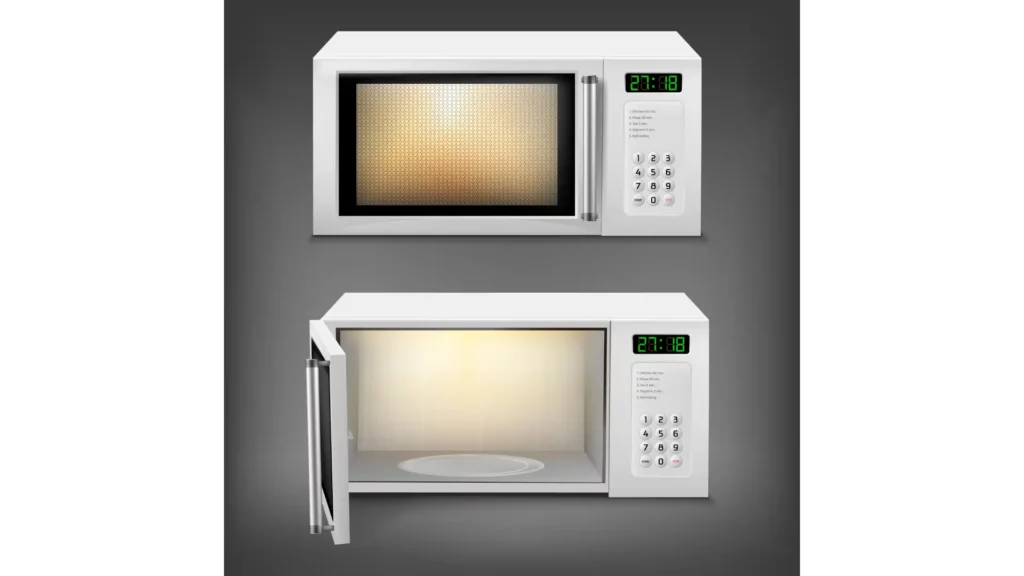
Can A Microwave Be Plugged Into A Power Strip?
To answer the question can I plug a microwave into a power strip directly: It is generally not recommended to plug a microwave into a power strip.
While it might seem like a simple solution to outlet shortages, doing so can pose significant risks. Here's why:
- Overloading Risk: Power strips have a maximum capacity. High-powered appliances like microwaves can easily exceed this limit, leading to potential overheating and fire hazards.
- Safety Standards and Regulations: Electrical safety standards and regulations are in place to protect users. Ignoring these by using a power strip for a microwave can result in dangerous electrical situations.
- Impact on Appliance Performance: Even if a power strip can technically support the microwave's power demand, there's a risk of affecting the appliance's performance.
- Warranty and Insurance Implications: Utilizing a power strip for a microwave can impact both the appliance's warranty and your home insurance. Some warranties may be voided if the appliance is not used according to the manufacturer's recommendations, and insurance companies might not cover damages caused by electrical fires resulting from improper use of power strips.
- Electrical Interference: Microwaves can cause electrical interference that may disrupt the operation of other devices plugged into the same power strip, potentially damaging sensitive electronics.
- Reduced Surge Protection: If a surge occurs, a power strip may not provide adequate protection to the microwave, leading to possible damage to its electrical components.
- Increased Risk of Circuit Breaker Tripping: The high power draw of a microwave, especially when combined with other devices on the same power strip, can lead to frequent tripping of your home's circuit breaker, causing inconvenience and potential safety issues.
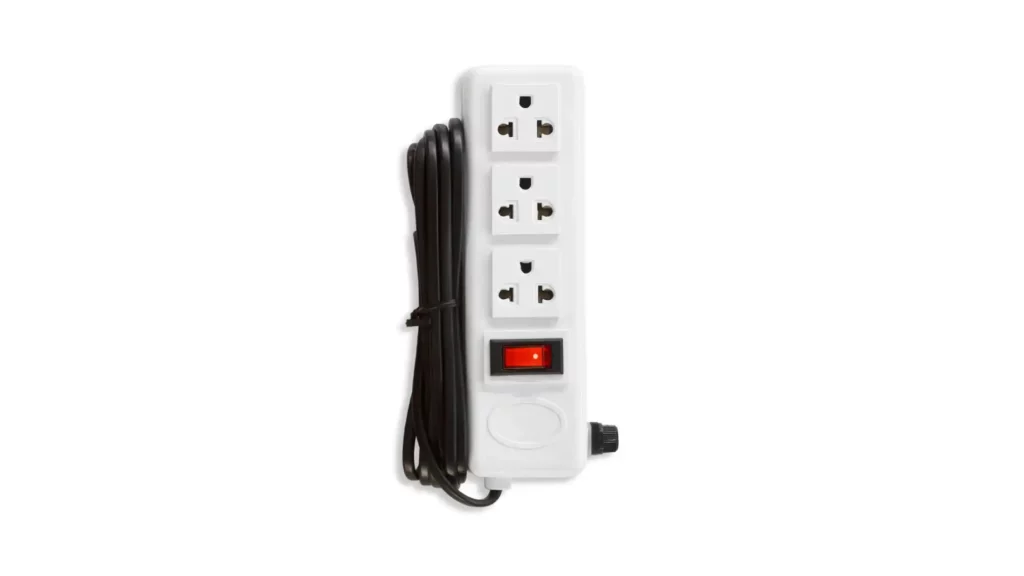
Safe Alternatives to Power Strips for Microwaves
Ensuring the safe use of your microwave extends beyond the question of “Can a microwave be plugged into a power strip?” Here are some best practices to follow:
- Direct Wall Outlet Use: Always ensure your microwave is plugged directly into a wall outlet. This guarantees a stable and safe power supply, minimizing the risk of electrical hazards.
- Regular Maintenance: Regular cleaning and servicing of your microwave are crucial. This helps in preventing potential electrical issues and extends the lifespan of the appliance.
- Surge Protection: Consider integrating surge protection directly into your home's electrical system. This provides a broader shield against voltage spikes, safeguarding not just your microwave but all kitchen appliances.
- Avoid Metal in the Microwave: Never place metal objects or utensils inside the microwave. Metal can spark and cause fires, posing serious safety risks.
- Monitor Cooking: Always stay close to the microwave when it's in use. This allows you to quickly address any issues or stop the microwave if something goes wrong.
- Use Microwave-Safe Containers: Only use containers that are specifically labeled as microwave-safe. Other materials may melt or release harmful chemicals under microwave radiation.
- Do Not Overload Circuits: Be mindful of the overall demand on the circuit to which your microwave is connected. Avoid running multiple high-power appliances on the same circuit simultaneously to prevent tripping the breaker.
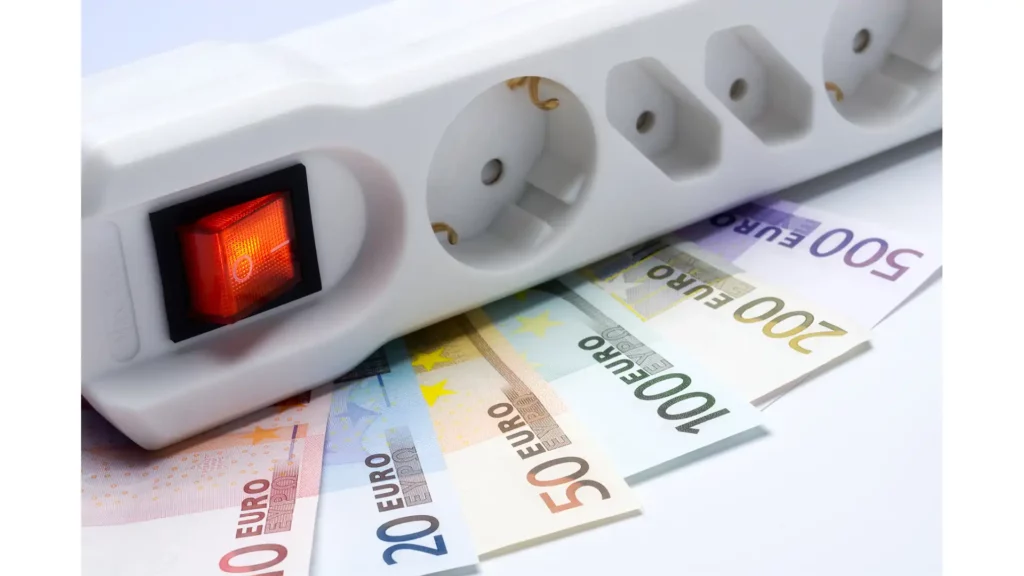
Enhancing Electrical Safety in the Kitchen: A Comprehensive Guide
Maintaining electrical safety in the kitchen is vital due to the presence of high-powered appliances like microwaves, ovens, refrigerators, and dishwashers.
Properly managing these devices and using them safely is essential to avoid accidents, fires, and property damage. Here are some tips for enhancing electrical safety in your kitchen.
- Adherence to Manufacturer Guidelines:
Appliance guidelines ensure safe use through detailed instructions on proper maintenance, installation, and safety precautions. Follow them closely to prevent accidents and misuse.
- Professional Consultation for Kitchen Electrical Setup:
Consult a certified electrician before changing your kitchen's electrical setup or adding appliances.
They can assess capacity, recommend safe practices, and ensure compliance with local codes. This can prevent overloading circuits and reduce the risk of electrical fires.
- Regular Inspection and Maintenance:
Regularly check kitchen outlets, wiring, and appliances for wear and tear to prevent hazards.
Address issues promptly and schedule maintenance for efficient and safe operation, extending appliance lifespan and avoiding malfunctions.
- Use of GFCI Outlets:
GFCI outlets protect against electrical shock by shutting off power when a fault is detected. Installing them in the kitchen, near sinks, adds extra protection against electrical hazards.
- Proper Appliance Placement:
Ensure that appliances are placed away from water sources and that cords are not stretched across walkways or under rugs, where they can become tripping hazards or overheat.
Additionally, consider the placement of appliances to prevent them from being accidentally turned on or bumped into during kitchen activities.
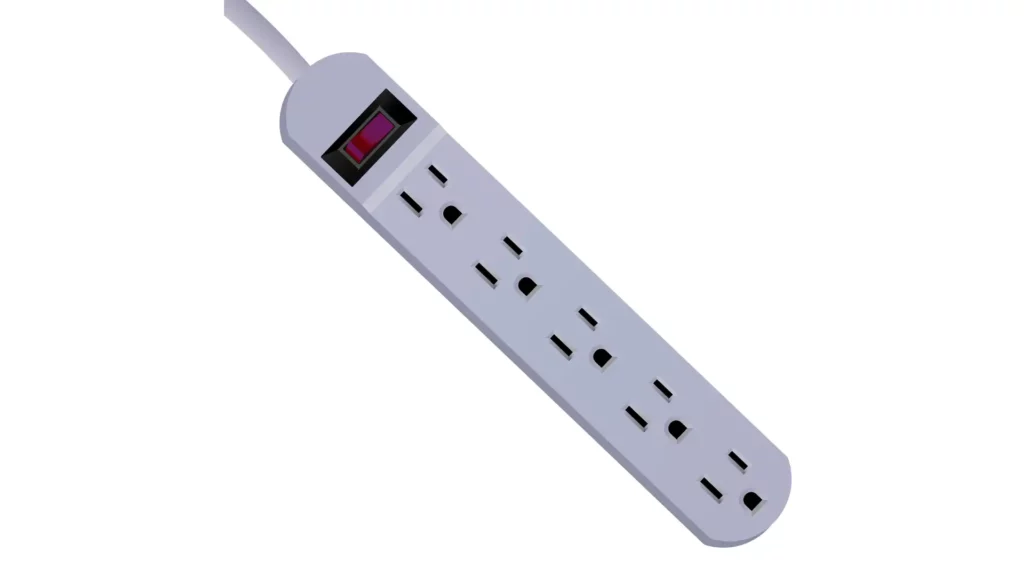
FAQs: Safely Powering Your Microwave
Can I use an extension cord as an alternative to a power strip for my microwave?
Using an extension cord for your microwave is not recommended either. Like power strips, most extension cords are not designed to handle the high power load of microwaves. This can lead to overheating and potentially cause a fire hazard. Always plug your microwave directly into a wall outlet.
Is there a specific type of power strip for microwave use that I can use safely?
No specific power strip for microwave use is designed to safely handle the high power load of a microwave oven. The safest practice is to connect the microwave directly to a wall outlet to prevent potential electrical hazards.
Can a microwave be plugged into a power strip safely?
Generally, it is not safe to plug a microwave into a power strip. Microwaves require a significant amount of power that can exceed the capacity of most power strips, leading to potential risks such as overheating or fire hazards.
I've heard mixed advice; can a microwave be plugged into a power strip without causing issues?
While you may find anecdotal instances where people have plugged a microwave into a power strip without immediate issues, it is strongly advised against due to the high power demand of microwaves, which can compromise the safety and functionality of both the appliance and the power strip.
Is it safe to plug other appliances into the same outlet as my microwave?
It's best to avoid plugging other appliances into the same outlet or circuit as your microwave. The high power draw of the microwave can cause circuit overloads, especially when combined with other appliances. This not only poses a fire risk but can also trip your circuit breaker, cutting off power.
Can you plug microwave into power strip if there's no other outlet available?
Even if no other outlet is available, it's still not recommended to plug a microwave into a power strip. This setup can lead to electrical hazards. It's better to seek alternatives, such as installing a new outlet or using a heavy-duty extension cord temporarily while ensuring it meets the microwave's power requirements.
Can you plug microwave into power strip as a temporary solution during kitchen rearrangements?
While tempting as a temporary solution, plugging a microwave into a power strip is not advisable even for short periods. The risk of overloading and potentially causing damage or fire is high due to the microwave's power consumption.
Can I plug two microwaves into a double outlet?
Plugging two microwaves into a double outlet is not advisable. Even if the outlet can technically handle the combined power draw, it's risky and could easily lead to circuit overloads. Each microwave should have its own dedicated outlet to ensure safe operation.
What do I do if my kitchen doesn't have enough outlets for all my appliances?
If your kitchen is short on outlets, consider hiring a licensed electrician to install additional ones. An electrician can also assess your kitchen's electrical load and possibly add dedicated circuits for high-power appliances like microwaves. This is the safest way to accommodate all your appliances without risking overloads.
How can I tell if my current setup is safe for my microwave?
To ensure your microwave setup is safe, check that the appliance is plugged directly into a wall outlet and not through a power strip or extension cord. The outlet should be properly grounded, and the circuit should have enough capacity to handle the microwave's power draw without tripping. If you're unsure, consult an electrician for a professional assessment.
Conclusion: Prioritizing Safety and Efficiency
From my personal experience, ensuring the safety and efficiency of using a microwave, and indeed all kitchen appliances, emphasizes the necessity of being well-informed and cautious.
The question of whether a microwave can be safely plugged into a power strip has underscored for me the broader implications of electrical safety and the importance of proper appliance usage. It's a reminder that while seeking convenience, we must also respect the power and complexities of modern technology in our kitchens.
I've learned that adhering to best practices, such as connecting microwaves directly to wall outlets and undertaking regular maintenance, not only extends the lifespan of these appliances but also safeguards our homes and loved ones.
This journey towards understanding and implementing electrical safety measures has been enlightening, instilling in me a deeper appreciation for the balance between technological convenience and the mindful stewardship of our kitchen environments.

